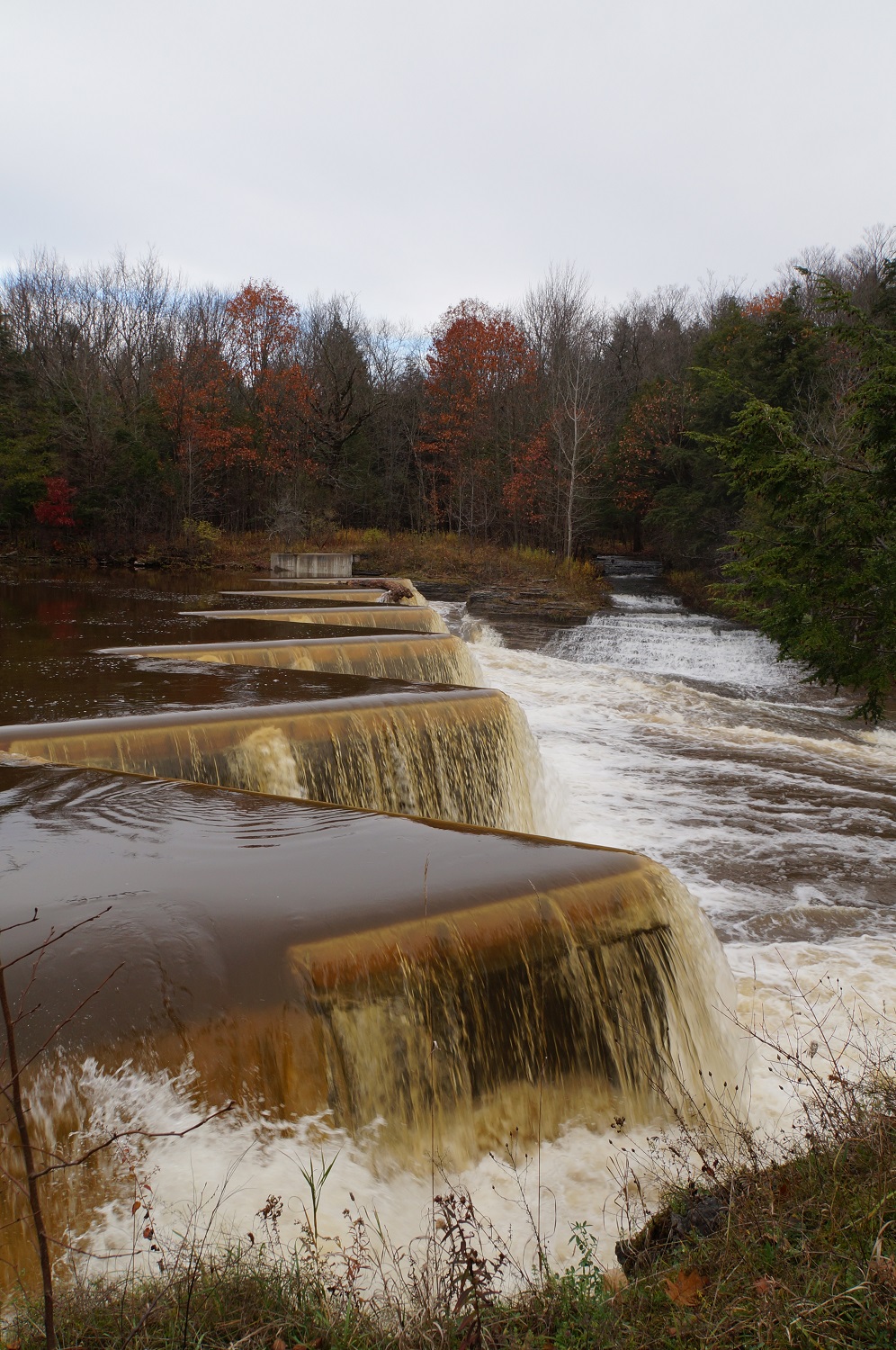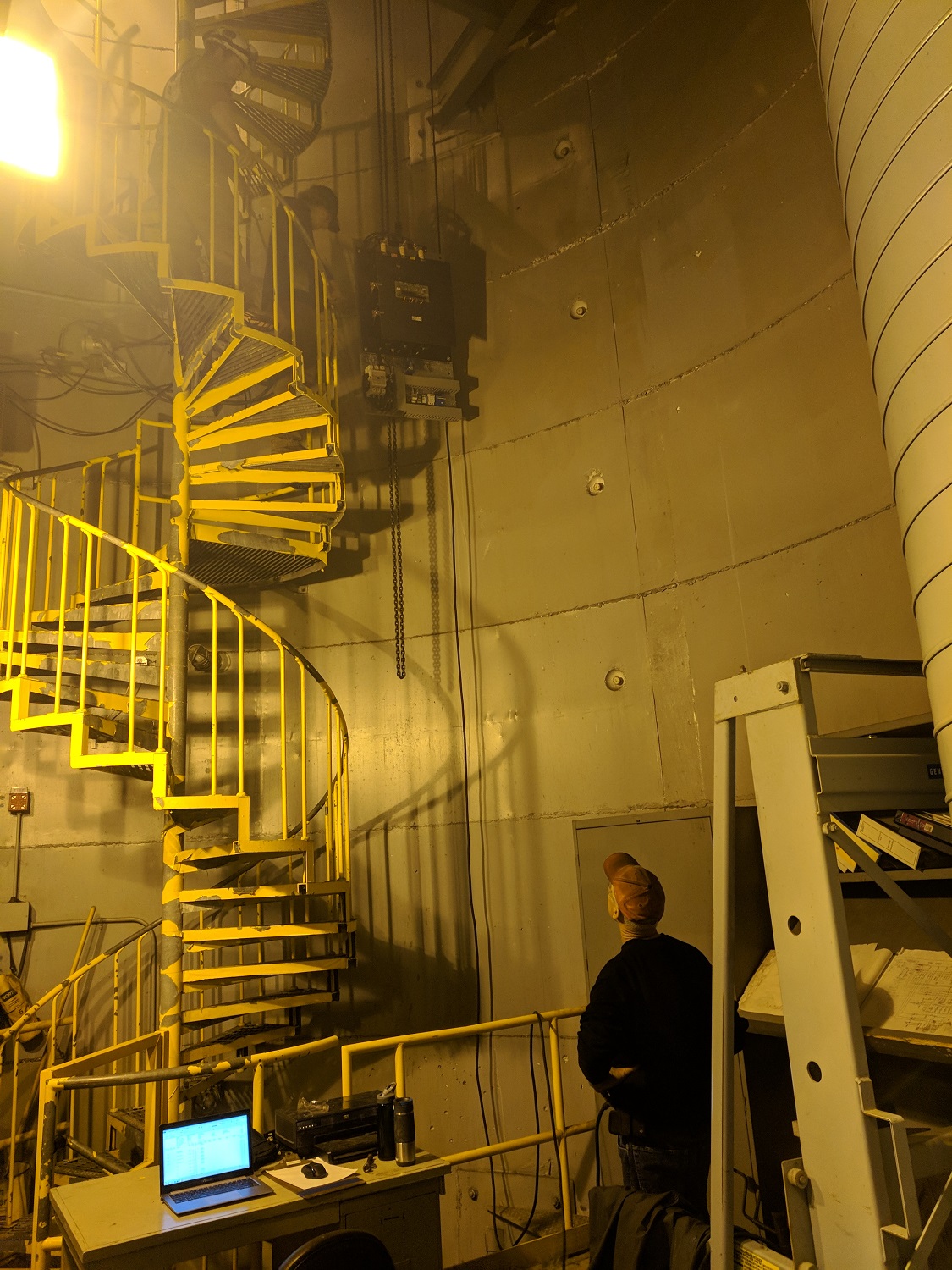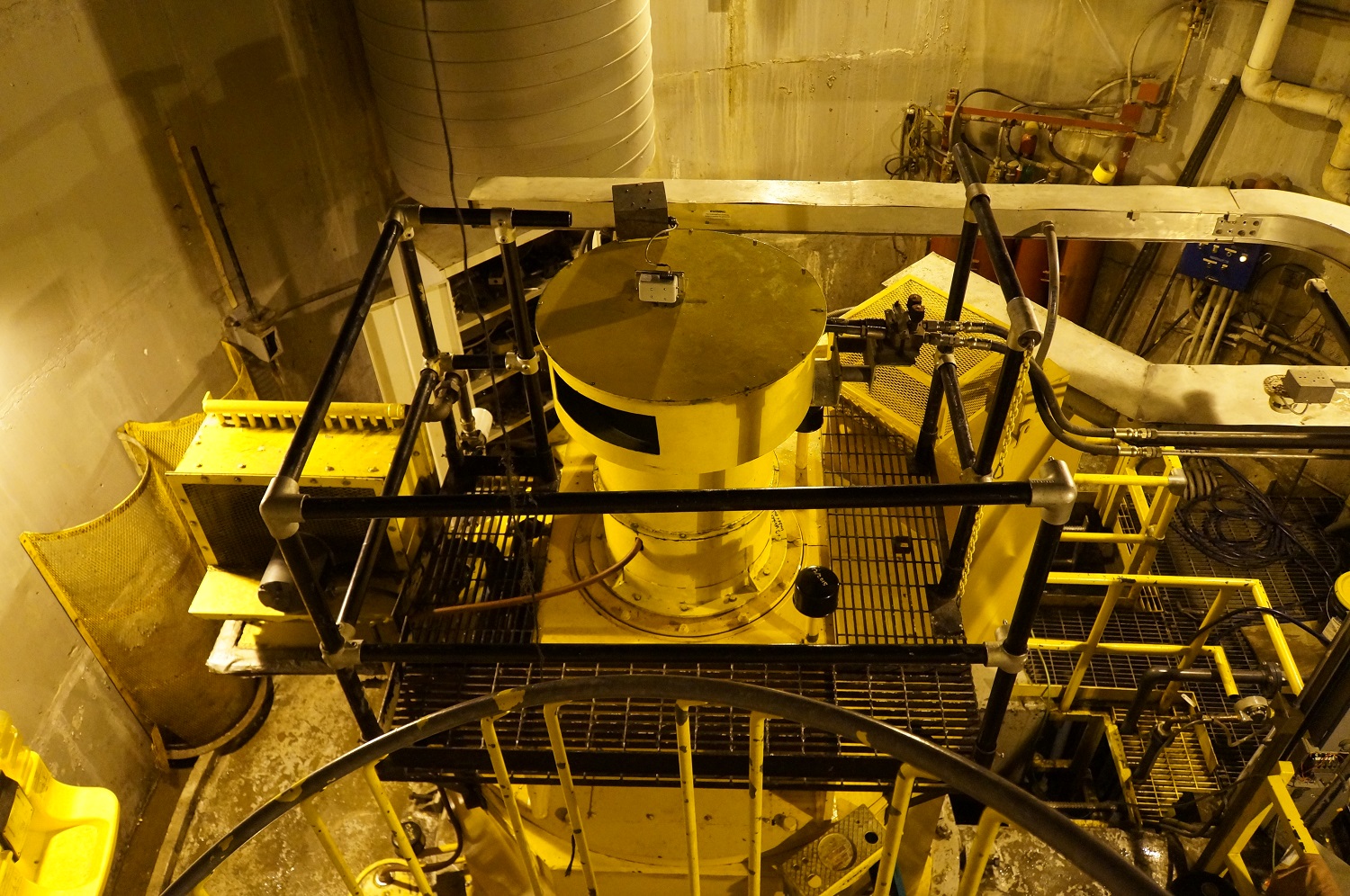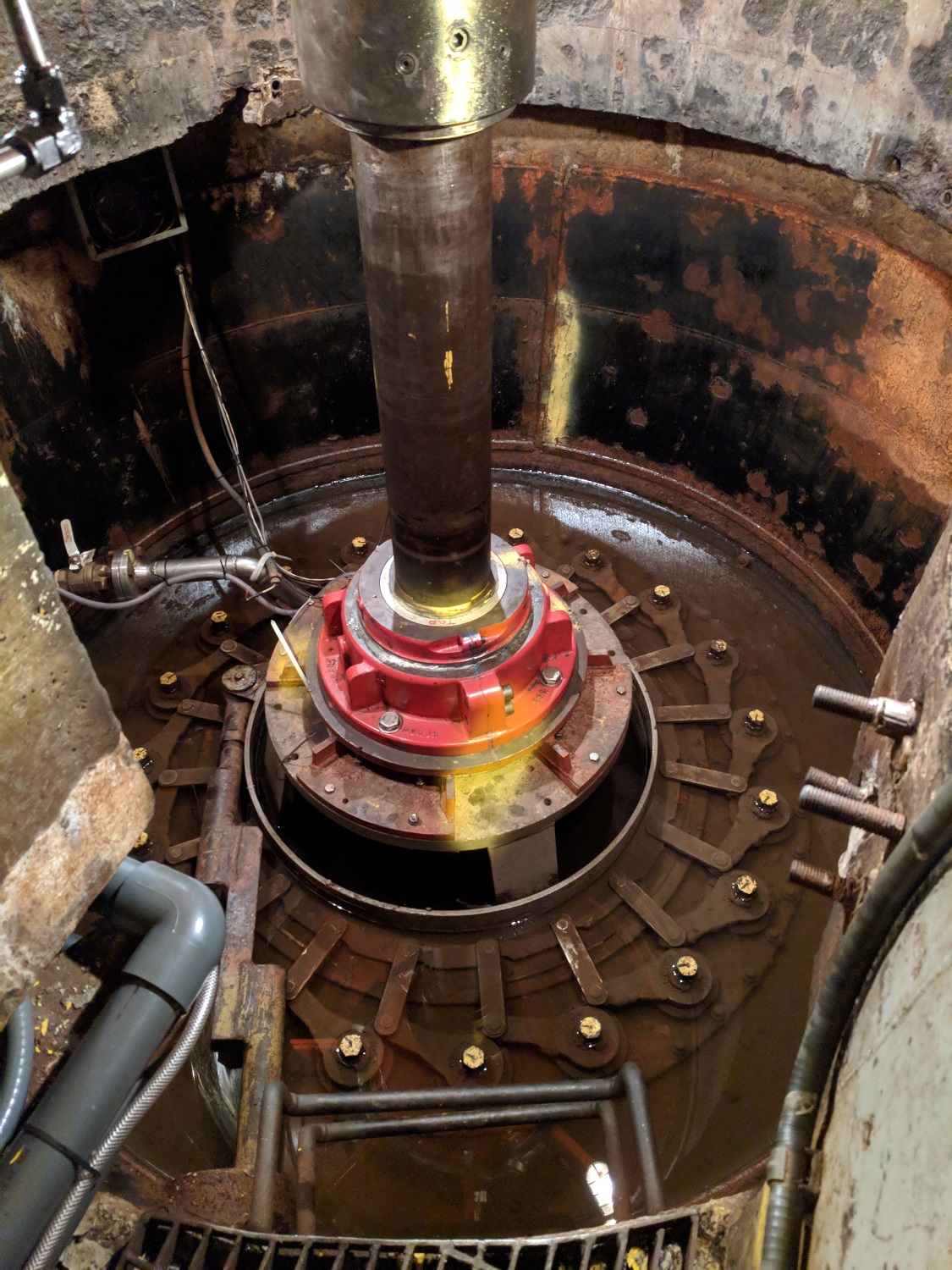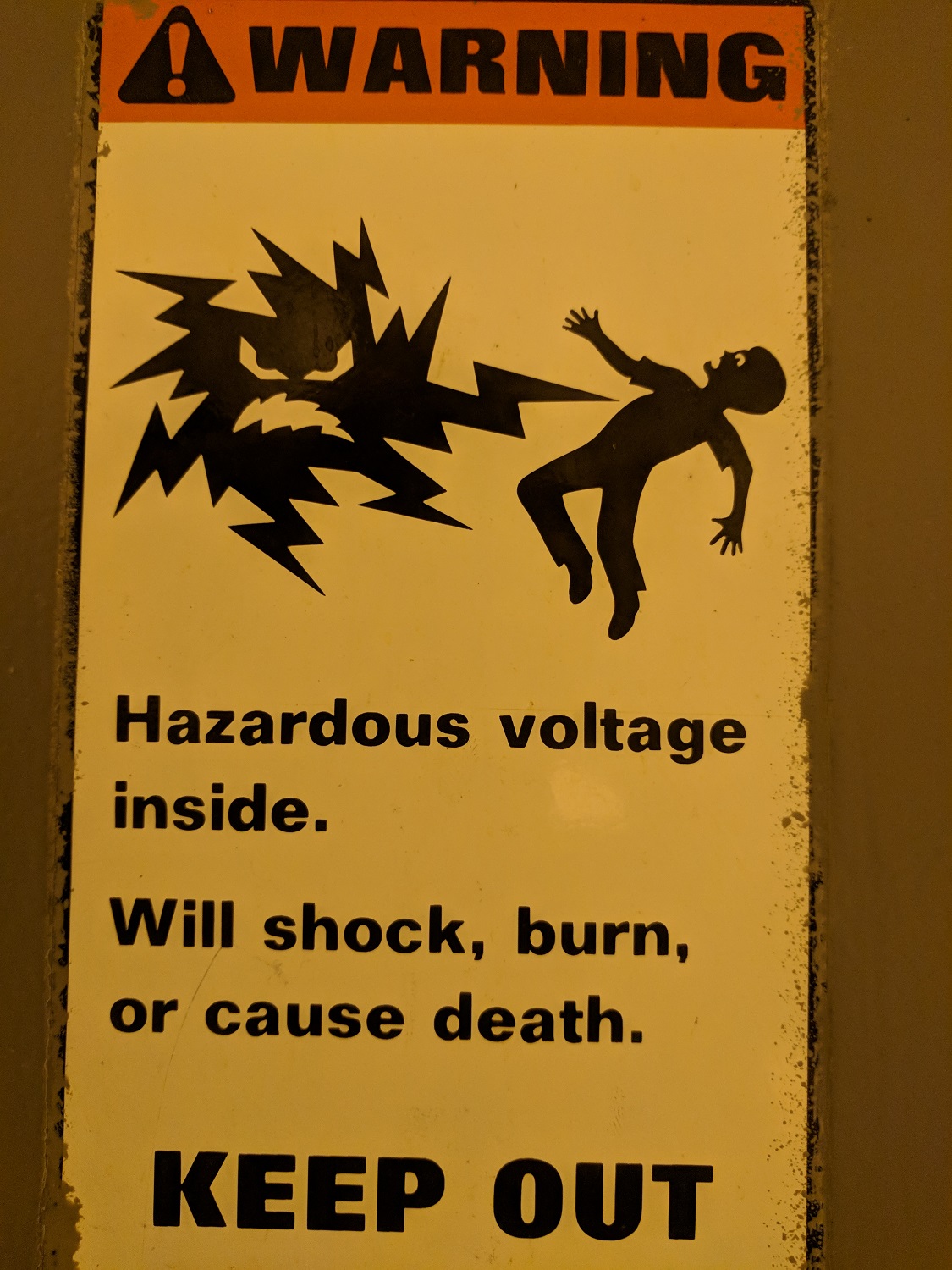PHT Project
1.6 MW, NY
Year: 2017
Running Gear: Vertical shaft Kaplan turbine with synchronous generator.
Scope: Replacement control system and exciter.
Located in upstate NY, this hydroelectric plant was built in the mid-1980s in response to the federal PURPA legislation. The site is well suited to hydropower, with a small labyrinth dam spanning the river banks just above a beautiful cascade into a deep gorge.
The plant ran well on its initial capital investment for many years, until it was shut down several years ago. The lower level, including generator and some controls, was flooded (totally submerged under water), and sat in that condition for more than a year. The plant was then sold to its present owners, who undertook a substantial clean-up project, repaired the equipment, and got the plant running again.
This hydropower plant has an unusual design: The entire powerhouse is a vertical concrete cylinder approximately 25 feet in diameter. The living roof is set even with the surrounding land, and the bottom of the powerhouse is set 65 feet deep into the mountain. Inside, the main transformer and other gear is set on the top level. Down a spiral staircase, the middle level holds the generator switchgear, exciter, and most of the controls and protection. The bottom level has the turbine-generator, HPU, and auxiliaries. The existing Texas Instruments PLC had been underwater for more than a year, but amazingly it was still mostly working after extensive clean up and time to dry out. However, the existing controls were definitely showing their age with frequent electrical problems. Support was also becoming increasingly difficult, including the Windows 98 PC that provided the HMI. The older controls also lacked some features and ease of usability that enable effective plant management and O&M.
In the fall of 2017, PHT installed a new control cabinet with PLC, touchscreen HMI, and Basler BE1-11g relays, and a new Payne exciter. PHT removed the original control cabinet and replaced it with the new cabinet, which was assembled at our workshop in NC. We removed the existing exciter, and installed a new backplane with the Payne exciter into the existing cabinet. Unlike the original control system, which used a remote PLC rack on the lower level, PHT placed most of the electronics on the middle level. Additional conduit and wiring were needed, but this is well worthwhile for the greater safety from flooding. Existing sensors and actuators were mostly reused, with PHT adding a vibration transducer and replacing some position sensors. The existing bank of electromechanical relays was replaced with two digital multifunction relays. Protection was improved, with the new control system also controlling a new station recloser (provided by others).
Upon startup, we found that the old system had not been fully opening the wicket gates. Because the old user interface was not very good, and the system was not easily adjustable, this had not been addressed. With the new controls, it was a simple matter to adjust the system to allow more wicket gate opening, which increased peak output by more than 100 kW. The customers are a small, private company, who also own a second plant in the area. They are pleased with the new controls, and are considering replacing their other plant’s controls with a PHT system.
(Click on an image for a larger view)

